SA Weekend inside story: How our health heroes stared down the deadly threat of the coronavirus
Part 3 of SA Weekend’s special report on our state’s coronavirus response focuses on Health Minister Stephen Wade and his team – and reveals just how scary the worst-case modelling really was.
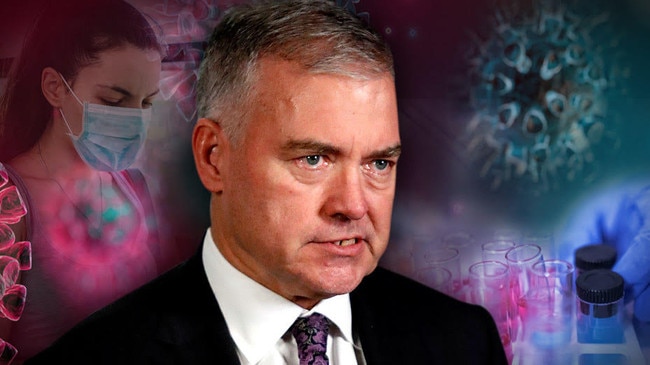
SA Weekend
Don't miss out on the headlines from SA Weekend. Followed categories will be added to My News.
- Inside story. SA’s COVID-19 response, Friday: Grant Stevens
- Inside story. SA’s COVID-19 response, Saturday: Nicola Spurrier
- Inside story. SA’s COVID-19 response, Monday: Steven Marshall
Even sweeping views from Health and Wellbeing Minister Stephen Wade’s ninth-floor city office did not give a hint of the microscopic killer dragon headed this way from an obscure Chinese market.
Just a few short months ago ramping, Repat reactivation and restructuring were among the health system’s dramas before it faced the major emergencies of the Adelaide Hills and Kangaroo Island bushfires.
Wade reflects on how these were overtaken as priorities as the greatest health crisis of a generation unfolded and terms like coronavirus and social distancing became part of everyday language.
Briefings in January showed the potential scale of the looming disaster.
While the public looked forward to Mad March events and the footy season, worst-case scenarios in SA Health forecast many hundreds dead and a health system so overloaded choices may have to be made about who gets ventilators.
“It was so fast moving – the modelling going to national cabinet was simply scary, it was chilling,” Wade recalls.
But cometh the hour, cometh the team.
SA Health’s response has led the nation, and the world, in containing the virus, sourcing Personal Protective Equipment (PPE), limiting the death toll and widespread testing, all while having some of the least onerous restrictions in the nation.
Not bad for a bureaucracy long the whipping agency for budget blowouts and overcrowded emergency departments.
Not only did frontline health workers rally to the cause while knowing colleagues overseas were dying, thousands of others from outside the public system volunteered to help.
We are at the Minister’s office high in SA Health’s Hindmarsh Square headquarters for this interview, where Wade greets me personally with a big smile but no handshake as I exit the lift.
In the comfortable conference room, two-seater lounges each now have green dots indicating only one person per lounge – if social distancing advice is going to be practised anywhere, it is here.
A law and economics graduate who entered the Legislative Council in 2006, Wade, now 60, requested the-then vacant Opposition health portfolio after the 2014 election and has been Minister since the Liberals came to power in 2018.
“People said, ‘You are mad, it is the worst job in government’ but I see it as the most values-rich, as everybody needs health and wellbeing – but I didn’t know there was a pandemic coming,” Wade says.
He recalls “chatter” in early January about a flu-like virus and that around mid-January China said there was something awry – then the storm burst.
One of his early decisions was to declare COVID-19 as a notifiable disease on January 28.
“We gazetted it as novel coronavirus with pandemic potential,” he says. “At that stage people were saying, ‘Should we use the word pandemic?’
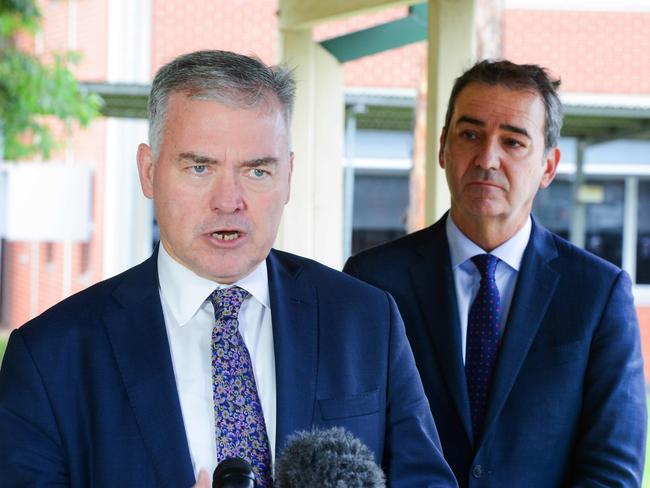
“It was even discussed among health ministers but that issue didn’t last long, it clear was becoming a pandemic.”
The first health ministers’ teleconference on the issue was in late January. Such meetings are usually about three times a year, but suddenly they were three times a week.
“Very quickly there was a sense of collegiality among health ministers because we were all facing the same challenges; everybody was trying to plan for more ICUs, ventilators, PPE,” he says.
The clock was ticking and time seemed to accelerate.
On February 1, SA recorded its first two cases – a Chinese couple who had flown in from the epicentre, Wuhan, then rather than self-isolate had travelled in public including to an auction at Firle.
There was some irony in the timing.
“I let the Premier know en route to Chinatown for the Chinese New Year celebrations,” Wade recalls. “So you make the announcement to the media outside the State Administration Centre and go straight around to Gouger St where the Chinese consul general was reassuring us that China had done everything it can.
“What is normally a bustling street is already half empty. The next week we are trying to persuade people it is safe to go to Chinatown but they stayed away in droves.”
SA was rapidly reaching a tipping point. In other countries the epidemic spread like dragon fire, overwhelming health systems and causing thousands of deaths.
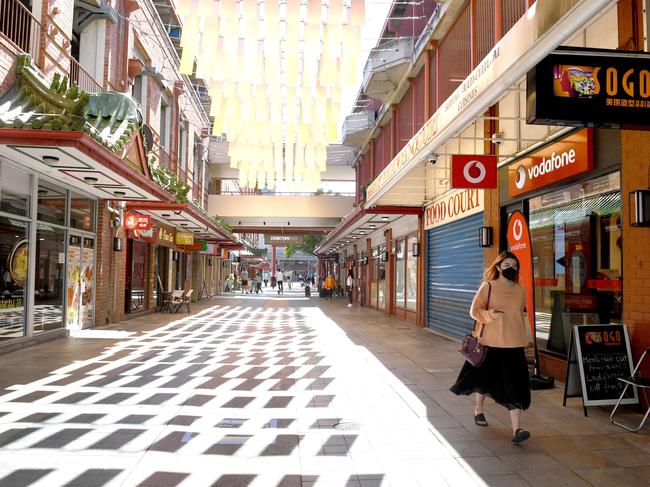
“Up to mid-February there were still some people saying it is a media beat up, it is just a bad flu season, but we knew it was a serious threat,” Wade says. “To go to Cabinet with some quite eye-watering funding request at a time even some Cabinet ministers were still a little sceptical was a challenge.
“As you go through February-March what was quite chilling was you had First World countries like Italy and Spain, then the UK and US, struggling.”
As Wade was trying to get a grasp on the ramifications he came across a study from Johns Hopkins University assessing how prepared various nations were for a pandemic. The prophetic study was released last November, before coronavirus emerged, and Wade initially was reassured to see Australia ranked fourth on the list of most-prepared nations.
“But then you look at who is above it — No. 1 was the US, No. 2 was the UK, so when you see those First World health systems struggling with this pandemic and you are being told you are even less prepared than they are it is a wake up,” he says.
“A distinctive thing about the Australian response was we acted early on public health advice.
“One of the first things was to stop travel from China. Then we closed the state borders, which was unprecedented.
“You almost had to have an intake of breath with some of the recommendations coming forward but thank God we backed those judgment calls.
“The level of transmission sourced from overseas and interstate showed it was a key element of our defence.”
Early discussions about restricting public movement and lockdowns included the frightening possibility of riots.

“As we were trying to flatten the curve here, you had places like Italy experiencing hospital overload and also civil unrest,” Wade says. “Some of those early discussions were not just planning for the health system response, we were also aware we might have civil unrest impacting on our health system.”
While public health chiefs never recommended state border closures it was put on the radar when Tasmania isolated their state. “I rang the Tasmanian health minister and said, ‘How did you do it with Section 92 in the Constitution? (guaranteeing free movement of people and goods across state borders)’, and was told that in the context of a public health emergency you can do it.”
This level of co-operation, of picking up a phone to talk to an interstate colleague, became a hallmark of the Australian response. The new national cabinet put aside political differences to focus on the job, as did meetings of health ministers.
Wade notes this is in stark contrast to the US where the response has been heavily politicised with Republicans and Democrats at each other’s throats and insults being hurled between the Trump Administration and state governors.
At a state level, collegiate co-operation also flowed.
Wade, Premier Steven Marshall, chief public health officer Nicola Spurrier and Police Commissioner Grant Stevens took advantage of what became daily media briefings from March 16 to have informal chats on the fast-changing situation before and after fronting reporters to give information and take questions.
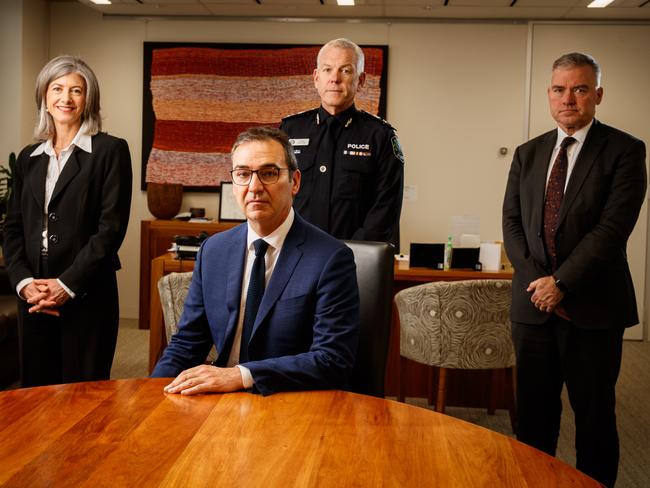
Plus there were the pre-dawn chats. Wade, who rises at 4am every morning, and the Premier are both early risers and often have a pre-dawn chat.
Spurrier and SA Health boss Dr Chris McGowan also began sitting in on Thursday state cabinet meetings as the health crisis became a colossal economic and social challenge.
Wade says the decision to make the chief public health officer a stand-alone position has paid dividends, while appointing three deputies has been crucial in the response such as sourcing enough PPE.
This included having local firm Detmold contracted to make 145 million medical masks.
He recalls some turbulence when The Advertiser revealed internal concern that millions of face masks sourced by the Commonwealth from overseas suppliers did not meet standards and were withdrawn in SA until later passed as fit for use.
“The Commonwealth was cross about that but SA Health was not willing to take a risk, we were not getting the assurance from the manufacturer we needed,” he says.
SA Health’s swift action saw a 50 per cent rise in ICU capacity and ventilators in a month, after early health ministers’ conferences had talked about rationing ventilators should demand exceed supply as seen overseas.
The Commonwealth deal to fund COVID-19 medical costs 50-50 with the states ended the usual argy-bargy about who would pay for health costs, while agreement with the private hospitals sector as most elective surgery was banned effectively created a united health system braced for a potential onslaught.
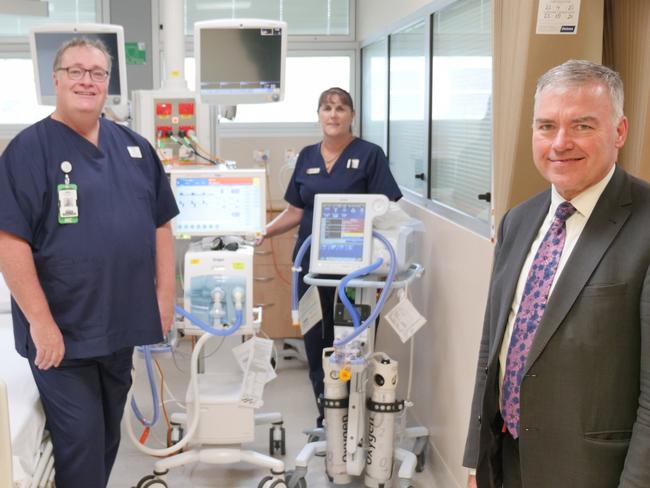
“In the department there was a real sense of focus and purpose, the vested interests you might encounter in the day to day were just put aside,” Wade says. “In those early days it was really scary but I can’t ever remember being told we are having trouble staffing our dedicated clinics.
“It is actually amazing how many health professionals have colleagues overseas. I remember talking to one of our senior nurses here and she had lost three colleagues overseas. So they are ringing up people they know overseas, in similar health systems, who are telling them horror stories, but they are still willing to go into the frontline.”
A personally confronting moment came when Wade learned an RAH ICU nurse had contracted the disease. It soon emerged she had not caught it at work, and fortunately she recovered.
Another part of Health to rise to the occasion was SA Pathology, at the time facing the privatisation chopping block.
Under clinical service director Dr Tom Dodd it fast-tracked tests, came up with innovations like drive-through test clinics and quickly became a world leader in tests per capita.
SA Health’s procurement chiefs aggressively secured PPE while the Communicable Diseases Control Branch swiftly tracked down close contacts of confirmed COVID-19 cases and isolated them, dramatically limiting what could have been an exponential spread.

Amid this intense pressure, Wade says he is fortunate to be “married to my best friend” Tracey Wade, a Matthew Flinders Distinguished Professor at Flinders University.
She was his rock as the weight of the challenge unfolded, ensuring their regular long bushwalks in the Adelaide Hills continued on rare weekend down time.
The challenge itself also helped.
“The sense of purposefulness eases the stress. There is a very strong sense of what you are doing is important and it is going to have an impact so that helps,” he says. “I’ve obviously been working very closely with the Premier, and his calmness and clarity has been a huge support to me.”
As SA gradually moves to re-open, the Minister is adamant the cure, which has resulted in closed businesses, thousands of jobs lost and soaring debt levels, has not been worse than the disease.
“I’m very sure we did what we needed to do,” he says.
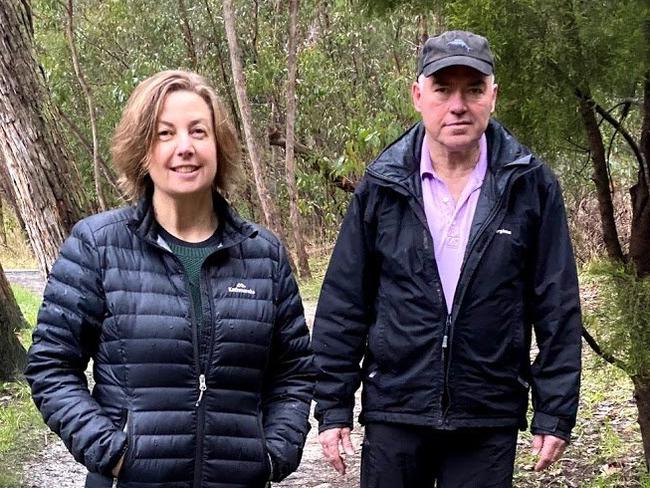
“We’ve sadly lost four lives in South Australia but it could have been hundreds and what is becoming clear is even people who have survived are taking disabilities with them.”
There is no “Mission Accomplished” banner in the Minister’s office. He is acutely aware a second wave could surge, and that history shows other pandemics are inevitable. But he is quietly proud of the staunch response of the health system, and of the wider SA community.
“Under the blowtorch of the pandemic people have come together with a sense of common purpose and put aside their vested interests,” he says.
“I think there is a general attitude that we, as a state, are proud we came face-to-face with the beast and we looked it in the eye.”
This article is Part 3 of a special four-part SA Weekend series taking you inside South Australia’s response to COVID-19.

